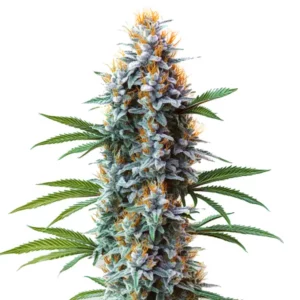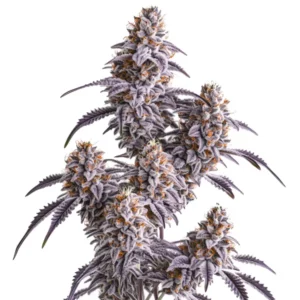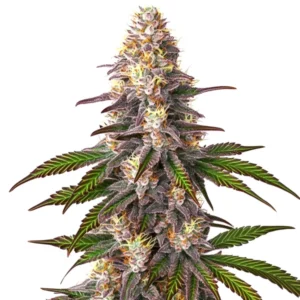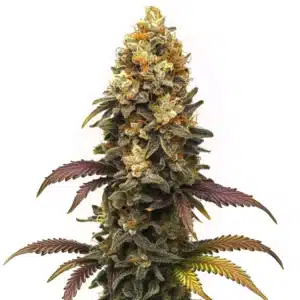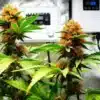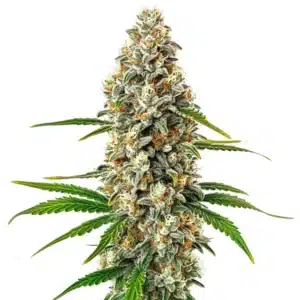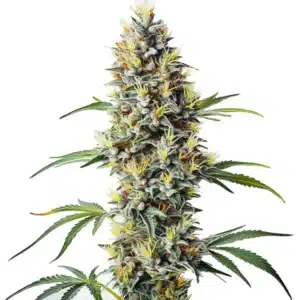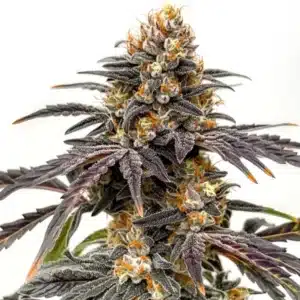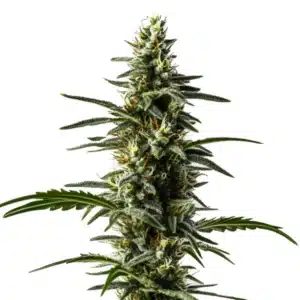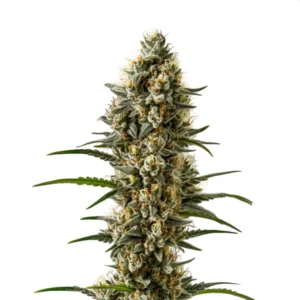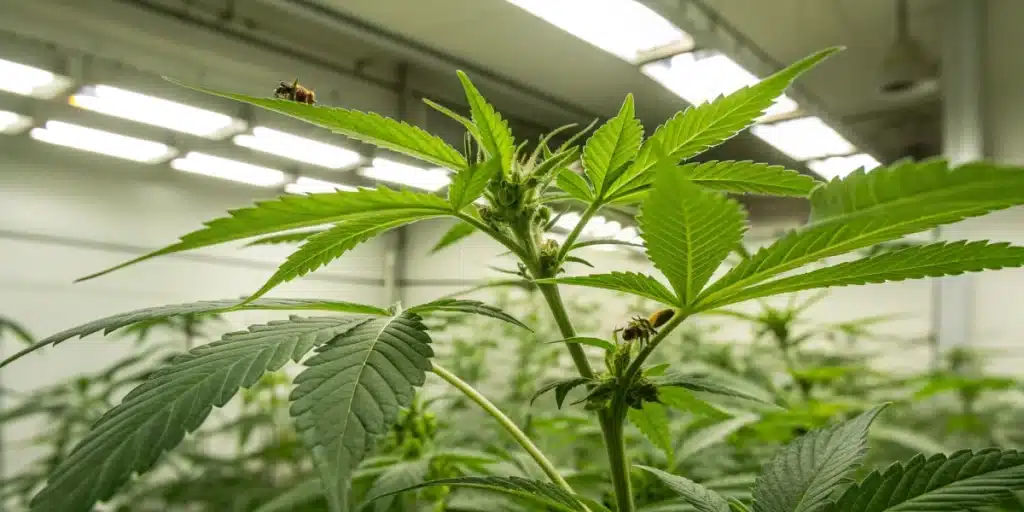
Insects on Weed Plants: Identification, Impact, and Control
Common Insect Pests
Aphids and Their Effects
Aphids are tiny sap-sucking insects that can wreak serious havoc on cannabis plants. Often found in clusters on the undersides of leaves, which is where they lay their eggs, making regular inspection of these areas critical, these pests aggressively feed on the plant’s vital fluids while excreting a sticky substance called honeydew. This honeydew frequently encourages a secondary outbreak of sooty mold, which further undermines plant health. Aphids multiply quickly, leading to stunted growth and significant declines in the overall vigor of your weed plants.
Identifying aphids remains relatively straightforward. They appear in various colors including green, black, and yellow. When you notice curled or yellowing leaves accompanied by a sticky residue, take immediate action.
Recommended Strains
Blue Amnesia Auto
|
|
THC | 17% - 18% (Medium) |
|
|
Type | Autoflowering |
|
|
Yield | Low |
|
|
Phenotype | 40% Indica / 60% Sativa |
Blue Cheese
|
|
THC | 16% - 20% (Medium) |
|
|
Type | Feminized |
|
|
Yield | High |
|
|
Phenotype | 80% Indica / 20% Sativa |
Spider Mites Identification
Spider mites thrive in warm, dry conditions and have a notorious reputation. These tiny arachnids, often nearly invisible without a magnifying glass to spot them clearly on the underside of the leaves, leave clear evidence of their feeding activity in the form of tiny round, white, or yellow bite marks (speckles) on leaves. Additionally, you may spot fine webbing, signaling a severe infestation. A critical factor to remember is that heat accelerates their life cycle; for every degree the temperature in your grow room rises, spider mites reproduce more rapidly.
Spider mites cause significant damage by sucking out chlorophyll, which weakens plants and diminishes overall yield. Their rapid reproduction requires you to take prompt and decisive action.
Whiteflies and Their Damage
Whiteflies represent another troublesome insect pest. These small, white, moth-like insects typically congregate on the undersides of leaves and feed on the plant sap. Their feeding not only weakens the plant but also results in the excretion of honeydew, encouraging the growth of sooty mold. To identify whiteflies, look for clusters of tiny, white insects that take off in a flurry when the plant is disturbed.
Promos & Deals
Impact on Cannabis Cultivation
Effects on Plant Health
The presence of insects on weed plants significantly undermines plant health by reducing photosynthesis and stunting growth. When pests actively remove sap, they severely weaken the plant’s ability to produce energy. While pests rarely kill a mature plant outright because they need its sap to survive, they will severely diminish the quality and size of the harvest and can negatively impact the final flavor of the flowers. Insect pests may also act as vectors for harmful pathogens, spreading viruses and fungi.
Yield Reduction Factors
Insects directly affect yield quality by reducing the plant’s foliage, which limits photosynthesis. Severe infestations force the plant to allocate energy toward defense rather than bud development, leading to a noticeable drop in overall yield. The stress imposed by pest infestations further exacerbates nutrient deficiencies and makes the plant more vulnerable to diseases.
Quality and Taste Implications
Pest infestations can critically diminish the quality of the final product by inducing plant stress, which causes buds to develop with lower potency and less desirable flavor profiles. Insects may also introduce unwanted toxins as they feed, compromising the taste and aroma. Infestations can also predispose plants to secondary issues like mold and mildew.
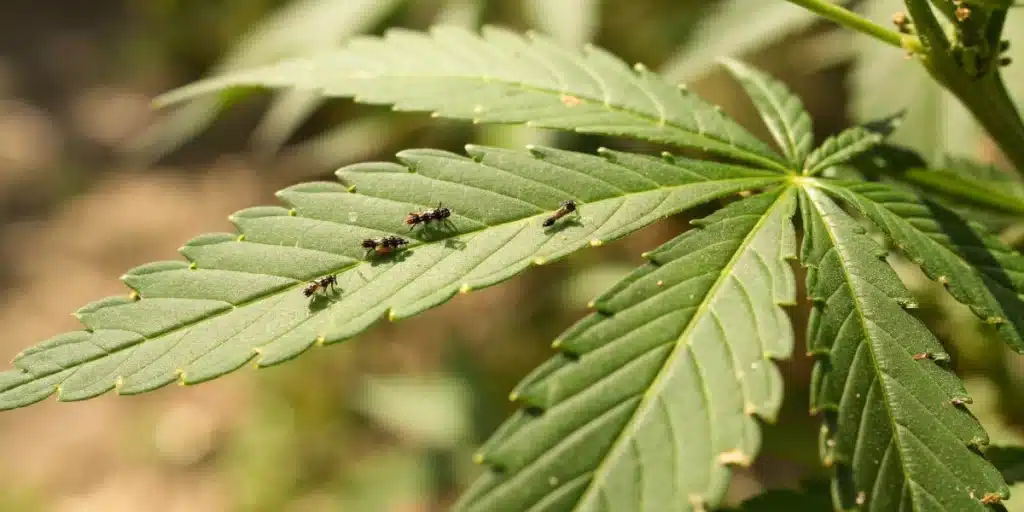
Preventative Measures
Cultural Practices
Implementing solid cultural practices stands as a critical defense against insect infestations. Timing your preventative treatments is key. It is highly recommended to thoroughly fumigate or treat your plants preventively just before switching them to the flowering stage. Once buds begin to form, you cannot use most toxic treatments without contaminating the final product. You can also deter pests by ensuring optimal growing conditions that include proper spacing, excellent air circulation, and controlled humidity levels. Regular cleaning of the grow area and prompt removal of plant debris minimizes hiding spots.
Organic Insecticides
Organic insecticides offer valuable tools to combat insect infestations. Natural products like neem oil and insecticidal soaps work effectively. Another simple yet effective organic method, especially against spider mites, is mechanical removal with water. Pests like spider mites are disturbed by wind and rain. You can mimic this by spraying the underside of the leaves with plain water to wash away both the pests and their eggs. When you apply organic insecticides, timing and method matter significantly.
Environmental Controls
Creating an environment that naturally discourages pests can dramatically lower the risk of infestations. Good air extraction and internal ‘wind’ from fans are a great form of pest prevention. Likewise, it is crucial to never let the grow room temperature exceed 25°C (77°F), as higher temperatures create a breeding ground for many common pests. Adjusting humidity and using physical barriers, such as insect netting, also help deter infestations.
Integrated Pest Management Techniques
Biological Control Options
Introducing beneficial insects into your cultivation environment offers an organic solution. For example, ladybugs are voracious predators of aphids, while a parasitic wasp called Encarsia formosa is a specialist used to control whitefly populations. Predatory mites can be introduced to hunt spider mites. Their presence establishes a balanced ecosystem where nature itself curbs pest outbreaks.
Chemical Interventions
Although organic methods are preferred, severe infestations sometimes require chemical interventions. When you use chemical insecticides, you must select products explicitly labeled for cannabis use and adhere strictly to safety instructions. Chemical interventions should always function as a last resort.
Monitoring and Early Detection
Frequent monitoring can help you catch pest invasions in their early stages. Regular visual inspections and the use of tools such as sticky traps provide immediate feedback. Early detection empowers you to take swift action.
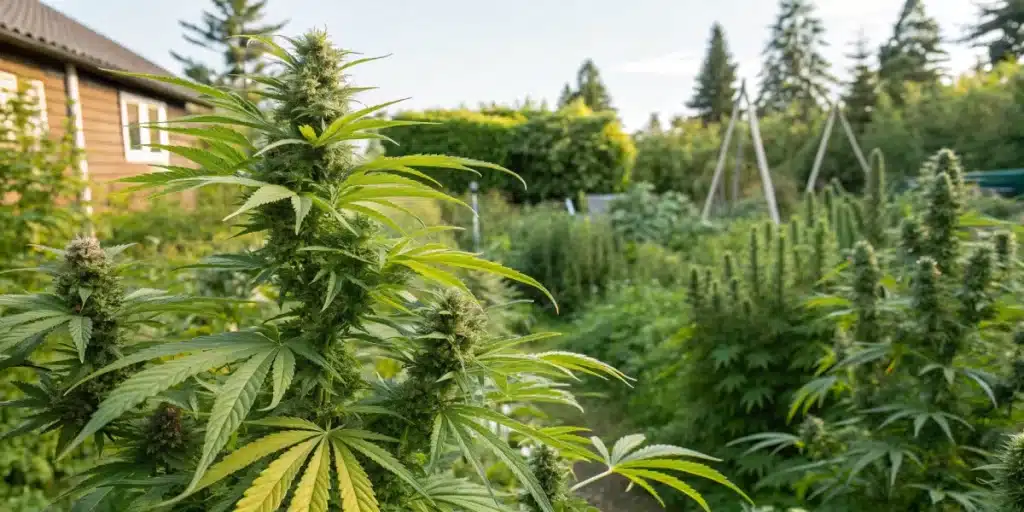
FAQs about insects on weed plants
What are the most common insects that affect weed plants?
Common insects that affect weed plants include aphids, spider mites, and whiteflies. Each pest exhibits distinct characteristics and causes varying levels of damage. Growers who actively manage their crops notice visible damage early on, prompting intervention. Many cultivation experts cross-reference management strategies with recommendations from CBD UK Law to ensure they use the most effective prevention and control methods consistently.
How can I prevent infestations in my grow room?
Preventing infestations requires a clean grow space, robust cultural practices, and regular plant inspections. Maintaining controlled humidity and air circulation, along with prompt debris removal, deters pests effectively. Some growers even adopt practices inspired by CBD UK Law protocols to minimize risks of infestations. These proactive measures significantly reduce the likelihood of pest issues and support the overall health and productivity of the cannabis crop.
Which organic methods are effective against these pests?
Effective organic methods against these pests include using neem oil, insecticidal soaps, and employing beneficial insects to naturally reduce pest populations. Implementing companion planting and maintaining a diverse ecosystem further fortify your crop against pest attacks. Some growers find that closely following guidelines aligned with CBD UK Law strengthens the efficiency of these techniques, ensuring that organic methods continuously protect your plants from harmful infestations while preserving quality and yield.



